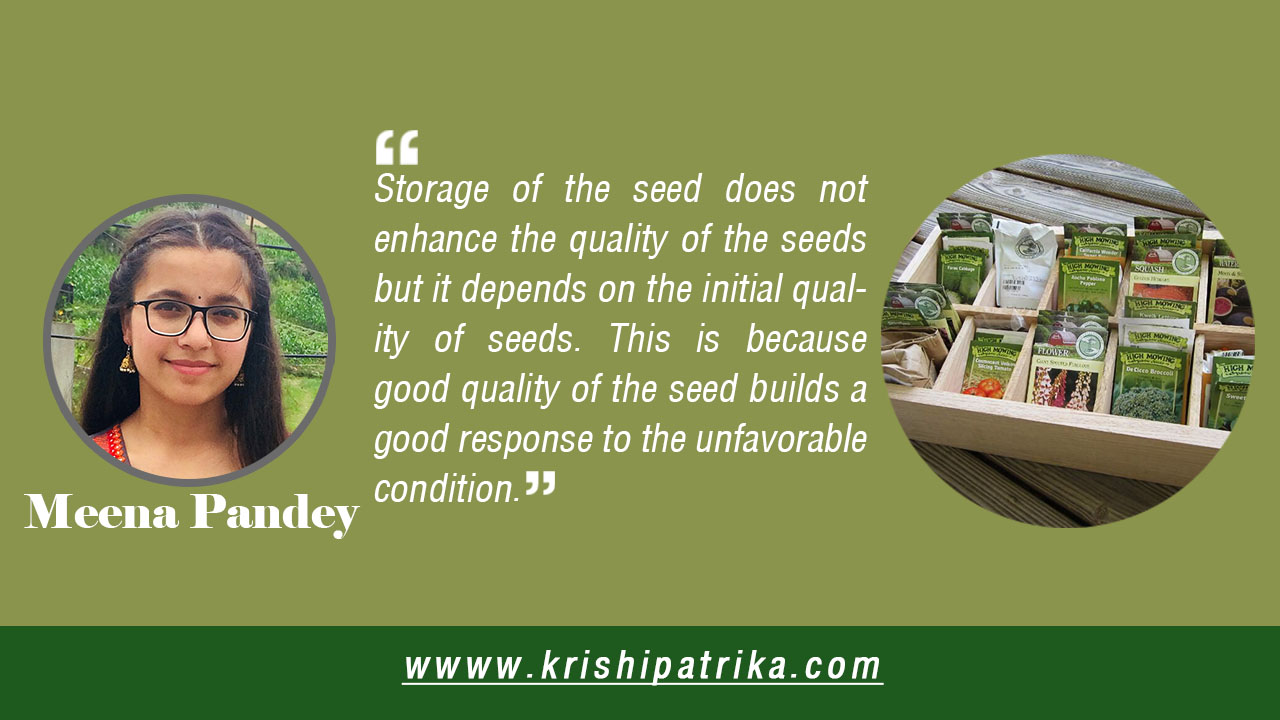
The first confirmed case of COVID-19 was in Wuhan which is taken as epicenter of the coronavirus outbreak. WHO had declared COVID-19 outbreak as global pandemic on March 11, 2020. The first confirmed case of COVID 19 in Nepal was on Jan 13, 2020. Nepal came under lockdown of the first phase since Mar 24, 2020 to control the spread of COVID19. Lockdown imposed restrictions on the movement of people unnecessarily and stopped the transportation except for the emergency condition. This global pandemic has affected almost all sectors in the world including agriculture. The pandemic has brought a big question mark on the production of quality seeds and crops. The increase in demand of world food production can only be addressed through proper management and use of high quality seeds including other plant genetic resources. Constant increase in agricultural production and productivity is largely dependent on the development of new and improved varieties of crops supported by an efficient system for timely supply of quality seeds to farmers.
Seed is the basic unit of agriculture in which the efficacy of other agricultural inputs are dependent to. Seed longevity is the quantitative term which implies for the seed viability after the storage of the seeds. It includes the total life span of seeds including both dormant and non-dormant phases of the seed. It has been assumed that seed density in the soil and seed production per individual plant have a lot to do with seed longevity but the actual factor governing seed longevity has not yet been determined. Seed storage is the preservation of seeds under controlled environmental conditions to maintain seed viability (germination and vigour) for long periods from harvesting to planting of the processed seed by the farmer. For the production of high quality seed drying for effective seed storability and longevity is very important. Seed moisture is a critical factor determining the viability and longevity of all seed types. In order to assure the longevity of the seeds, we must decrease the moisture content to the suitable range. If the moisture content is high, it creates a favorable environment for the growth of mould. However, the moisture content less than 4% causes the rapid desiccation of the seed. There are various critical factors that affect the seed in storage including seed moisture, storage temperature, gaseous exchange, physical condition of the seed. initial viability and vigour, microflora and insect infestation. For every decrease in 1% seed moisture content, the life of the seed is doubled and for every decrease of 5oC in storage temperatures, the life of the seed is doubled. Increases in pressure of O2 tend to decrease the period of viability. The longevity of the seed is dependent on the seed types as sensitivity to drying and temperature influences the natural storability. Storage of the seed does not enhance the quality of the seeds but it depends on the initial quality of seeds. This is because good quality of the seed builds a good response to the unfavorable condition. When seed is placed in a new environment, if the relative humidity is higher or lower than the level at which its moisture content is in equilibrium, the seed will gain or lose moisture until an equilibrium is reestablished with the new environment thereby deteriorating the quality of seeds. The researches carried out to determine the absolute category of seed longevity of a single species is not conclusive and hard to define. Seeds that are artificially buried often live longer than seeds dispersed naturally. Data is still lacking but close co-operation between different disciplines such as genetics, seed physiology and seed ecology may yield the mechanisms behind seed longevity in the coming days. Different studies conducted in different parts of the world suggest that seed longevity is influenced by moisture and nutrient availability of a site.
Seed banks have been given a lot of attention in both applied and fundamental research during the last decades. It is of utmost necessary for gene banks to maintain viability of the seed for a considerably longer period of time. Seed longevity is highly significantly correlated with light availability and not with productivity. We need to bridge gaps between the fields of seed ecology, physiology and genetics.
It is necessary to store only high-quality seed for future planting seasons and to reject low quality seed. Once a deterioration starts it affects all the seed in that lot. So, it is essential to store the seeds following all the measures assuring the longevity of the seeds. In doing so, we do not have to face the problem of scarcity of the quality seeds on timely growing the crops. For the country like Nepal who heavily rely on the neighboring country for import of the quality seeds has greatly affected the crop cultivation in the unprecedented global pandemic of coronavirus where the restriction has made for the export and import of the commodities to a large extent. Due to the impose of the lockdown and less movement of transportation in this global pandemic, it has made feel the essence to store the seeds following principles of sees longevity as the unavailability of the quality seeds timely has led to the heavy reduction in the crop production. To go through the unavoidable situation like global pandemic the concerned authority and the farmers group must make apt steps soon for providing basic agricultural inputs i.e. seed.









